Introduction
Berlin stands as one of the world’s undisputed capitals of street art, where history, politics, and creative expression converge on the city’s walls, buildings, and hidden alleyways. The street art scenes in Berlin offer travelers an extraordinary open-air gallery experience that tells the story of a city constantly reinventing itself. From massive murals adorning apartment buildings to intricate stencil works tucked away in quiet corners, Berlin’s urban canvas provides an authentic glimpse into the city’s soul.
Berlin, the greatest cultural extravaganza that one could imagine
David Bowie
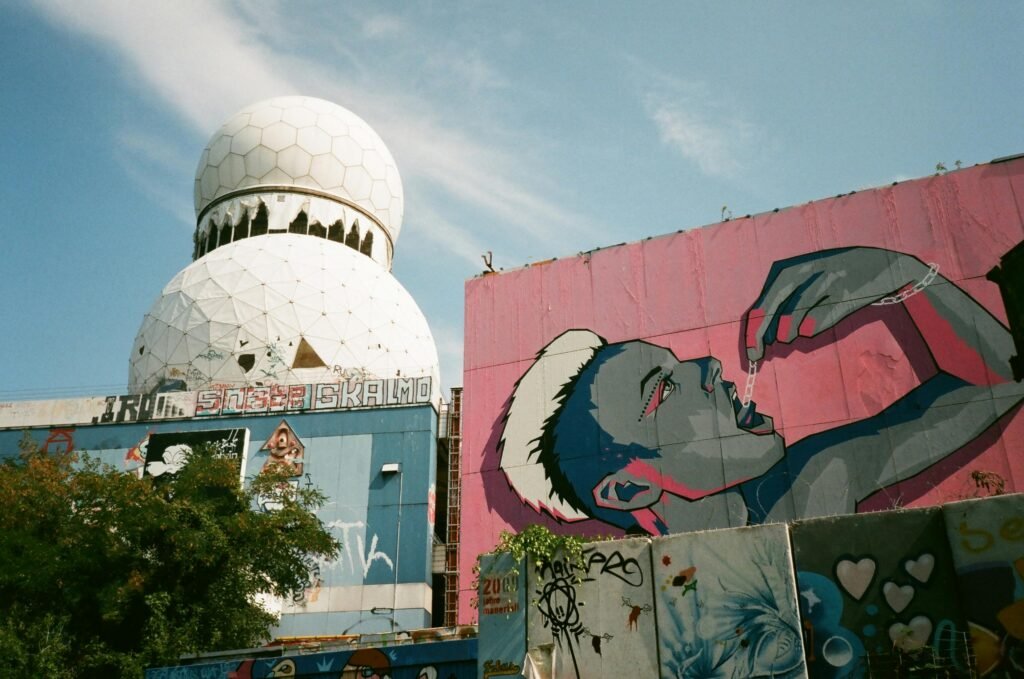
Jawohl! For backpackers and travelers seeking to explore beyond traditional tourist attractions, Berlin’s vibrant street art landscape presents a free, ever-changing exhibition that spans numerous neighborhoods. The sheer volume and diversity of artwork you’ll encounter throughout the city are astounding, making Berlin a truly unique destination for anyone interested in urban art culture.
Before embarking on your street art adventure, ensure you have reliable connectivity to navigate between locations and share your discoveries. Gohub’s international eSIM solutions provide seamless internet access throughout Berlin, allowing you to map your route to hidden murals and post your street art photos without worrying about connectivity issues.
The Historical Evolution of Berlin’s Urban Art Movement
From Berlin Wall to Global Canvas: The Birth of a Street Art Capital
The street art scenes in Berlin are deeply intertwined with the city’s turbulent past. Understanding this historical context enhances appreciation of the artwork you’ll discover throughout the city.
The fall of the Berlin Wall in 1989 marked a pivotal moment for urban art in the city. During the Cold War era, the western side of the Wall became an unintentional canvas where artists used spray cans to voice perspectives on freedom and political division. Following reunification, this artistic energy spread throughout the newly unified city, creating a more liberal environment where artists enjoyed greater freedom to transform urban spaces.
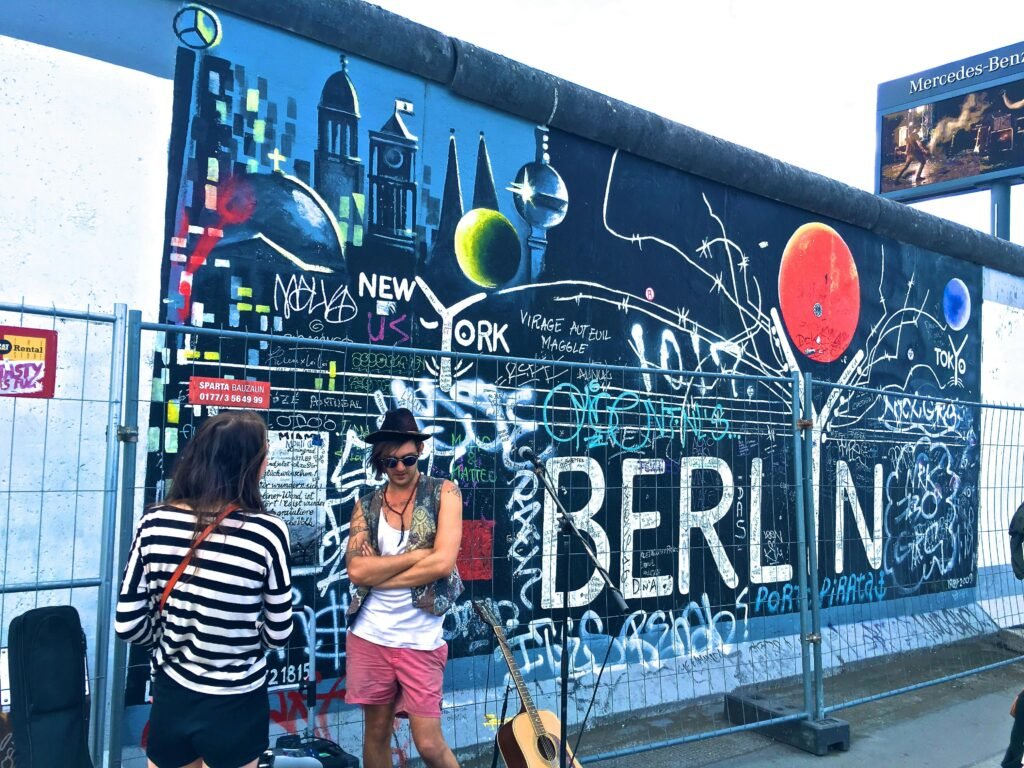
Image: The Berlin Wall covered in colorful murals at East Side Gallery
Love underground art? You might also enjoy Paris’ lesser-known museums—unexpected and inspiring.
Post-Cold War Street Art Revolution
In the decades following reunification, Berlin’s street art evolved from primarily letter-based graffiti tags to more elaborate image-based works designed to convey specific messages. This transformation reflected broader changes in the city’s identity and the growing acceptance of street art as a legitimate form of cultural expression.
The abundance of abandoned buildings and vacant spaces in post-reunification Berlin, particularly in the eastern districts, provided artists with ample canvases to work on. Additionally, the city’s relatively relaxed attitude toward urban art compared to other European capitals allowed the scene to flourish organically.
Exploring Berlin’s Street Art Neighborhoods
Kreuzberg Street Art: The Alternative Heart of Urban Expression
Kreuzberg stands as the epicenter of Berlin’s alternative culture and boasts one of the densest concentrations of politically motivated street art in the city. This neighborhood’s walls serve as a visual diary of social commentary, artistic innovation, and cultural resistance.
Where to Find the Best Murals in Kreuzberg
When exploring Kreuzberg street art, focus on these key areas:
- Oranienstrasse: This bustling street features numerous murals addressing themes of gentrification, immigration, and social justice.
- Wrangelstrasse: Wander through this area to discover a plethora of graffiti pieces and smaller street art interventions.
- Mariannenstrasse: Home to several large-scale murals by internationally renowned artists.
Remember to look up as you explore, since some of the most impressive works adorn the sides of residential buildings, strategically positioned along the U-Bahn rails for maximum visibility to train passengers.
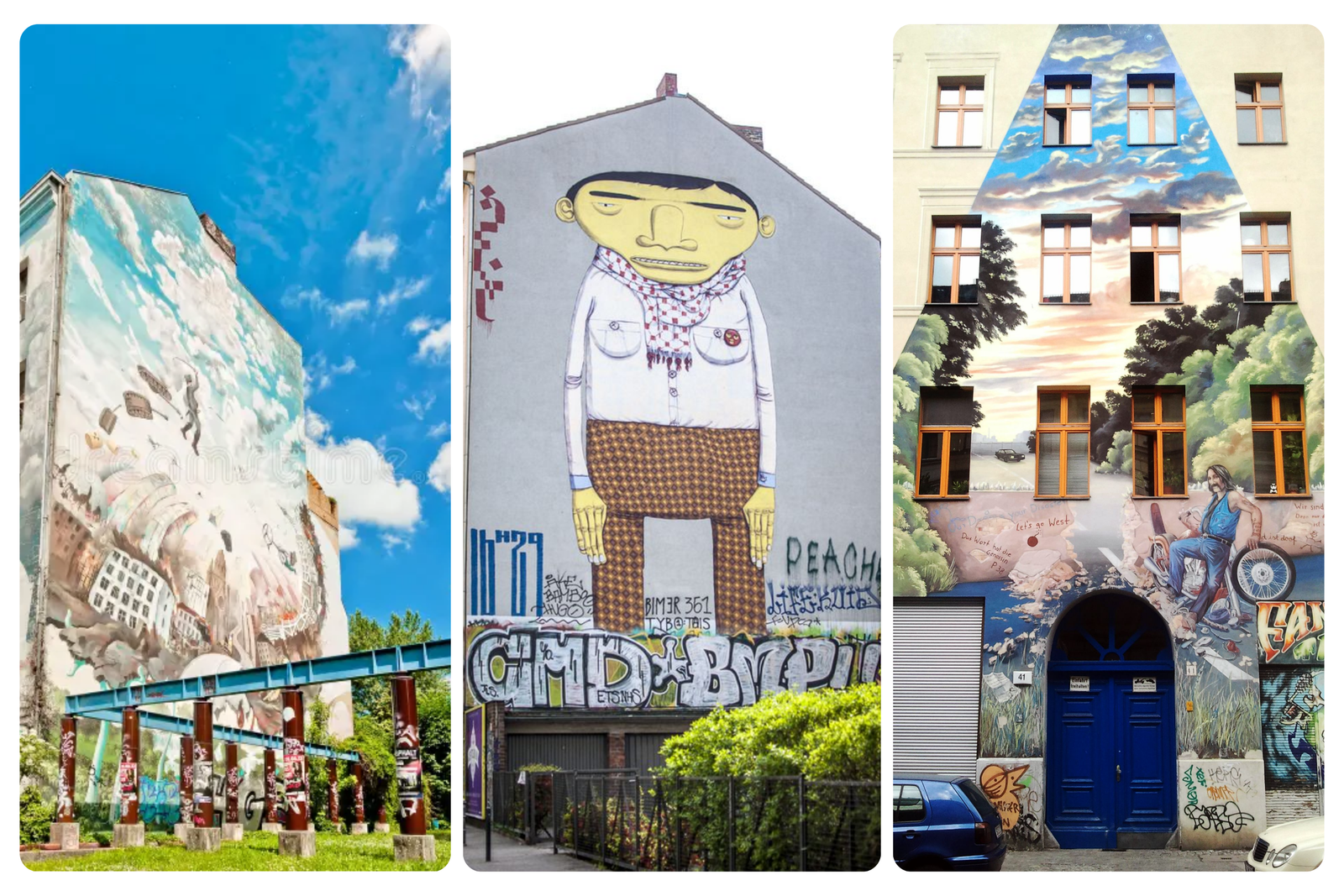
Image: Apartment building in Kreuzberg
Friedrichshain Graffiti: Raw Urban Expression and Alternative Spaces
Adjacent to Kreuzberg, Friedrichshain offers another rich concentration of street art with a slightly different character. This neighborhood is known for its vibrant energy and impressive large-scale murals on building facades.
R.A.W. Gelände: Urban Art Paradise
The former railway maintenance yard known as R.A.W. Gelände has transformed into one of Berlin’s most dynamic cultural spaces and a paradise for street art enthusiasts. This sprawling complex features:
- Colorful graffiti covering nearly every available surface
- Large-scale murals by both local and international artists
- Constantly changing paste-ups and stencil works
- Alternative clubs, bars, and cultural venues
The raw, industrial atmosphere of this area provides the perfect backdrop for urban art exploration and offers insight into Berlin’s thriving alternative scene.
East Side Gallery: Berlin Wall Art as Living History
No exploration of street art scenes in Berlin would be complete without visiting the iconic East Side Gallery. This 1.3-kilometer stretch of the Berlin Wall stands as the longest continuous section still in existence and functions as a permanent open-air gallery.
Following the fall of the Wall in 1989, over 100 artists from around the world were invited to paint murals reflecting on the political changes and the Cold War era. Today, these works serve as both historical documentation and artistic expression.

Image: Fraternal Kiss mural
Must-See Murals at East Side Gallery
While walking the full length of the gallery is recommended, don’t miss these iconic pieces:
- “Fraternal Kiss” by Dmitri Vrubel, depicting the embrace between Soviet leader Leonid Brezhnev and East German leader Erich Honecker
- “Test the Best” by Birgit Kinder, showing a Trabant car breaking through the Wall
- “It’s Happening at the Wall” by Kani Alavi, portraying crowds during the fall of the Wall
Due to weathering and vandalism, many murals have undergone restoration over the years, creating an interesting dialogue between preservation and the inherently ephemeral nature of street art.
Mitte Urban Art: Central Berlin’s Creative Evolution
While known primarily for its historical landmarks and tourist attractions, Berlin’s central Mitte district also hosts a significant urban art scene, particularly around Rosenthaler Strasse and Hackescher Markt.
Dead Chicken Alley: The Ever-Changing Canvas
Located in the Haus Schwarzenberg complex near Hackescher Markt, Dead Chicken Alley (also known as Hof 3) represents one of Mitte’s most dynamic street art hotspots. This narrow passageway features:
- Constantly evolving murals that can change overnight
- A mix of permanent works and temporary pieces
- A staircase entirely covered in stickers
- Proximity to several alternative art galleries and cafés
The contrast between this gritty, art-filled alley and the polished shopping district just steps away perfectly encapsulates Berlin’s multifaceted character.
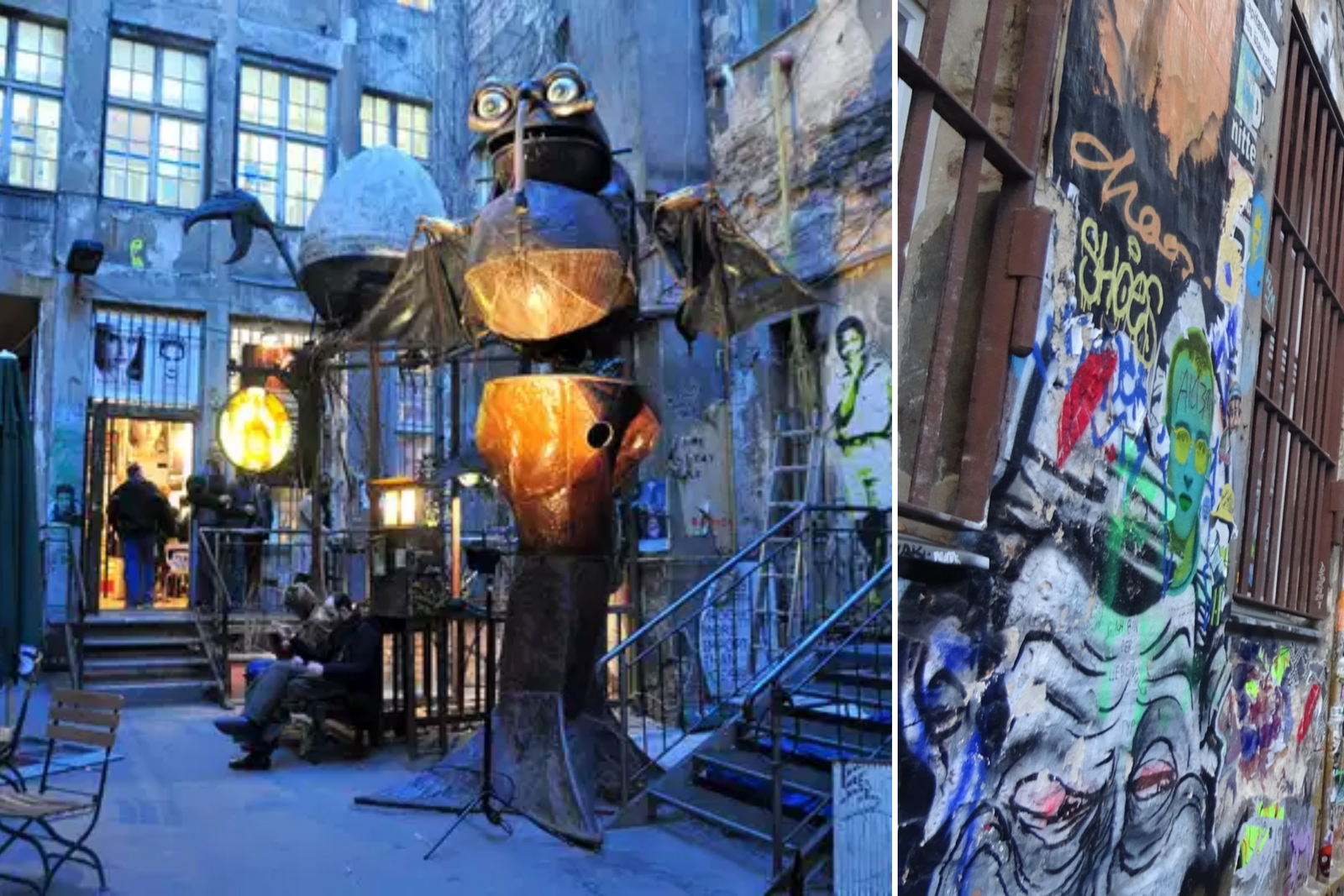
Image: Street art-filled Dead Chicken Alley in Mitte
Schöneberg Urban Art: Off the Beaten Path
For travelers looking to explore beyond the most well-known street art neighborhoods, Schöneberg offers a less crowded but equally rewarding experience. This residential district west of Kreuzberg features:
- More subtle and integrated street art interventions
- Works by established artists like El Bocho and XOOOOX
- A glimpse into how street art functions in Berlin’s more residential areas
The street art in Schöneberg tends to be more scattered than in areas like Kreuzberg, making the discovery process part of the adventure.
🖼️ Adding Berlin to a bigger Europe adventure? Check out the best European road trip destinations — Berlin is just one stop on an epic cultural route.
Types of Street Art to Discover in Berlin
Berlin Murals: Large-Scale Urban Masterpieces
The most visually striking elements of Berlin’s street art scenes are undoubtedly the massive murals that transform ordinary building facades into extraordinary works of art. These large-scale paintings often:
- Address political and social issues
- Tell stories about Berlin’s history and identity
- Showcase incredible technical skill and artistic vision
- Create landmarks that become part of the neighborhood’s character
Notable examples include Victor Ash’s “Astronaut Cosmonaut” in Kreuzberg and ROA’s animal murals throughout the city.
Berlin Graffiti: From Tags to Complex Pieces
While murals often receive the most attention, traditional graffiti forms the backbone of Berlin’s urban art ecosystem. The city’s graffiti scene includes:
- Tags: Stylized signatures that mark an artist’s presence
- Throw-ups: Quickly executed, bubble-style lettering
- Pieces: More elaborate, colorful works with complex lettering
- Wildstyle: Highly intricate, interwoven lettering that can be difficult to decipher
The 1UP crew represents one of Berlin’s most prolific and recognized graffiti collectives, with their distinctive markings visible throughout the city, often in seemingly impossible-to-reach locations.
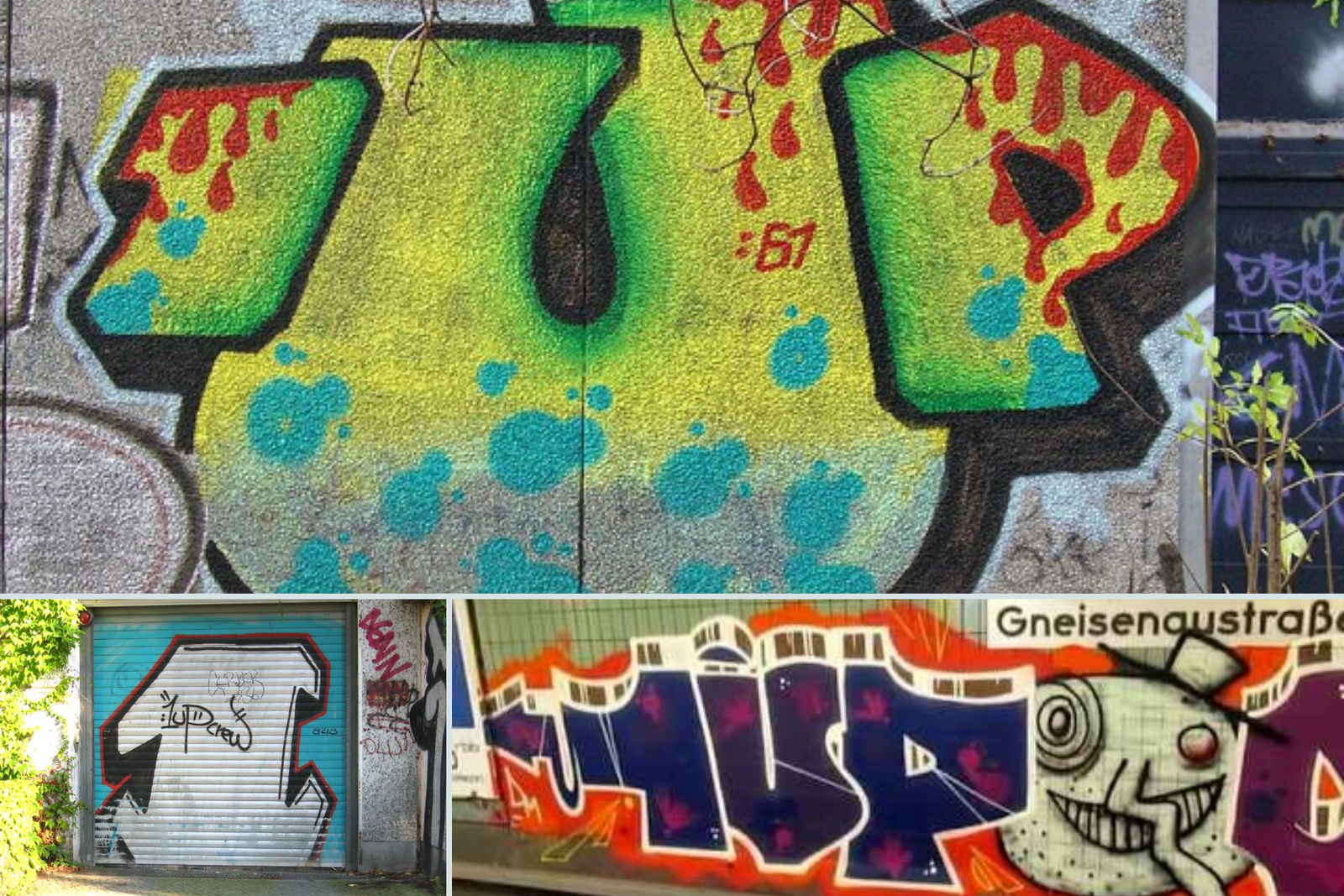
Image: 1UP crew in Kreuzberg
Stencil Art Berlin: Precision and Political Commentary
Stencil art represents another significant technique in Berlin’s street art repertoire. Artists create templates that allow for quick application and precise reproduction of images. This method is particularly effective for:
- Political and social commentary
- Creating recognizable characters or symbols
- Executing detailed works in high-risk locations
- Maintaining a consistent style across multiple locations
Artists like Alias and XOOOOX have mastered this technique, creating instantly recognizable works throughout the city.
Wheatpaste and Installations: Beyond Paint
Berlin’s street art scenes extend beyond traditional paint applications to include various other techniques:
- Wheatpaste/Paste-ups: Paper-based artworks adhered to surfaces using glue
- Stickers: Small adhesive artworks placed on street furniture and signage
- Installations: Three-dimensional works integrated into the urban environment
- Reverse graffiti: Creating images by selectively cleaning dirty surfaces
These diverse approaches demonstrate the innovation and adaptability of Berlin’s street artists as they interact with the urban environment.
From murals to matsuri, Japan’s monthly festivals offer another side of culture worth experiencing.
Famous Berlin Street Artists to Look For
Local Legends of Berlin’s Urban Canvas
As you explore the street art scenes in Berlin, familiarizing yourself with key artists enhances the experience by allowing you to recognize distinctive styles and recurring themes.
El Bocho: Urban Storytelling
Known for his whimsical yet often darkly humorous characters, El Bocho has become one of Berlin’s most recognizable street artists. His “Little Lucy” series, depicting a cartoon girl finding creative ways to kill her cat, appears throughout the city and has become an iconic part of Berlin’s visual landscape.
XOOOOX Berlin: Fashion Meets Street
XOOOOX combines stencil techniques with fashion imagery to create elegant, thought-provoking pieces that comment on consumerism and identity. His work often features stylized female figures reminiscent of fashion photography juxtaposed with his tag.
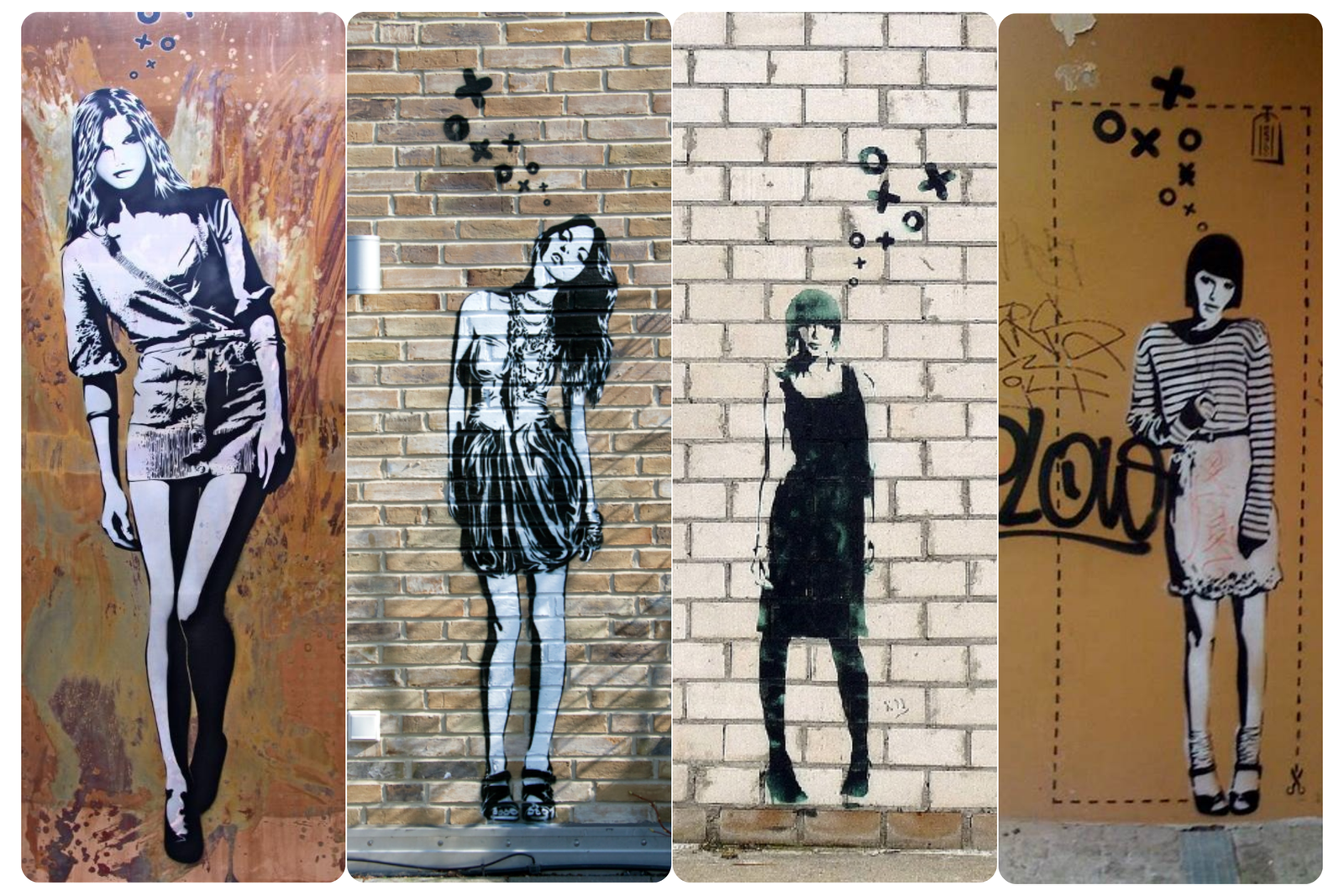
Image: XOOOOX stencil artwork
Alias Berlin: Emotional Stencil Works
Alias creates detailed, emotionally charged stencil works often depicting solitary figures in moments of vulnerability or contemplation. His pieces invite viewers to reflect on human experience and urban isolation.
International Artists in Berlin’s Urban Landscape
Berlin’s reputation as a street art capital attracts artists from around the world who contribute to the city’s visual dialogue:
- ROA: The Belgian artist known for his massive black-and-white animal murals
- Victor Ash: Creator of the iconic “Astronaut Cosmonaut” mural in Kreuzberg
- Invader: The French artist who installs mosaic pieces inspired by 8-bit video games
The interplay between local and international artists creates a rich, diverse urban art ecosystem that continues to evolve and surprise.
Practical Guide to Exploring Berlin Street Art
Street Art Tours Berlin: Guided Exploration Options
For travelers seeking deeper insights into the street art scenes in Berlin, guided tours offer valuable context and access to hidden gems. Several companies specialize in street art-focused experiences:
- Alternative Berlin Tours: Offers comprehensive street art tours led by local experts
- Berlin Street Art Tours: Provides in-depth knowledge about artists and techniques
- Street Art Workshop Berlin: Combines tours with hands-on creative experiences
These guided experiences typically last 2-3 hours and provide historical context, artist information, and interpretation of the works you’ll encounter.

Image: Tour group observing large mural in Kreuzberg
Self-Guided Street Art Adventures
For independent explorers, self-guided adventures allow for flexibility and serendipitous discoveries. To create your own street art itinerary:
- Start with the East Side Gallery for an introduction to Berlin’s wall art history
- Explore Kreuzberg, focusing on Oranienstrasse and surrounding areas
- Visit R.A.W. Gelände in Friedrichshain for raw, industrial street art vibes
- Discover Dead Chicken Alley in Mitte for a concentrated dose of urban creativity
- Venture to Mauerpark to see the legal graffiti wall and weekend artists in action
Connectivity Tip: Using Gohub’s international eSIM ensures you’ll have reliable internet access to navigate between locations, research artists, and share your discoveries in real-time.
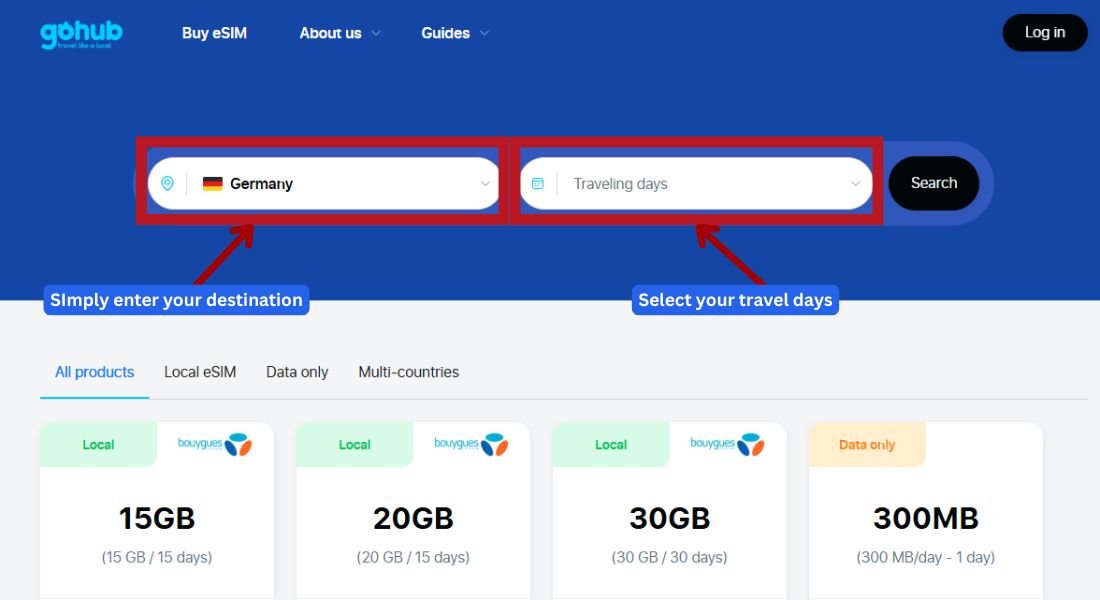
Image: Screenshot of the GoHub eSIM webpage, highlighting the destination input field with “Germany” selected, illustrating how users can easily search for eSIM data plans.
Legal Walls Berlin: Where to Watch Artists in Action
For travelers interested in seeing street art creation firsthand, Berlin offers several legal walls where artists can work without fear of legal consequences:
- Mauerpark Wall of Fame: Particularly active on weekends
- Teufelsberg: The former NSA listening station now covered in street art
- Yaam Beach Club: Features designated areas for legal painting
Visiting these locations provides opportunities to witness the creative process and potentially interact with artists as they work.
The Cultural Significance of Berlin Street Art
Street Art as Political Resistance in Berlin
Throughout its evolution, street art in Berlin has maintained a strong connection to political expression and social commentary. Many works directly address:
- Gentrification and rising housing costs
- Immigration and refugee rights
- Environmental concerns
- Historical memory and reconciliation
- Anti-fascism and resistance to extremism
This political dimension gives Berlin’s street art scenes a depth and relevance that goes beyond mere decoration, transforming the city’s walls into platforms for public discourse.
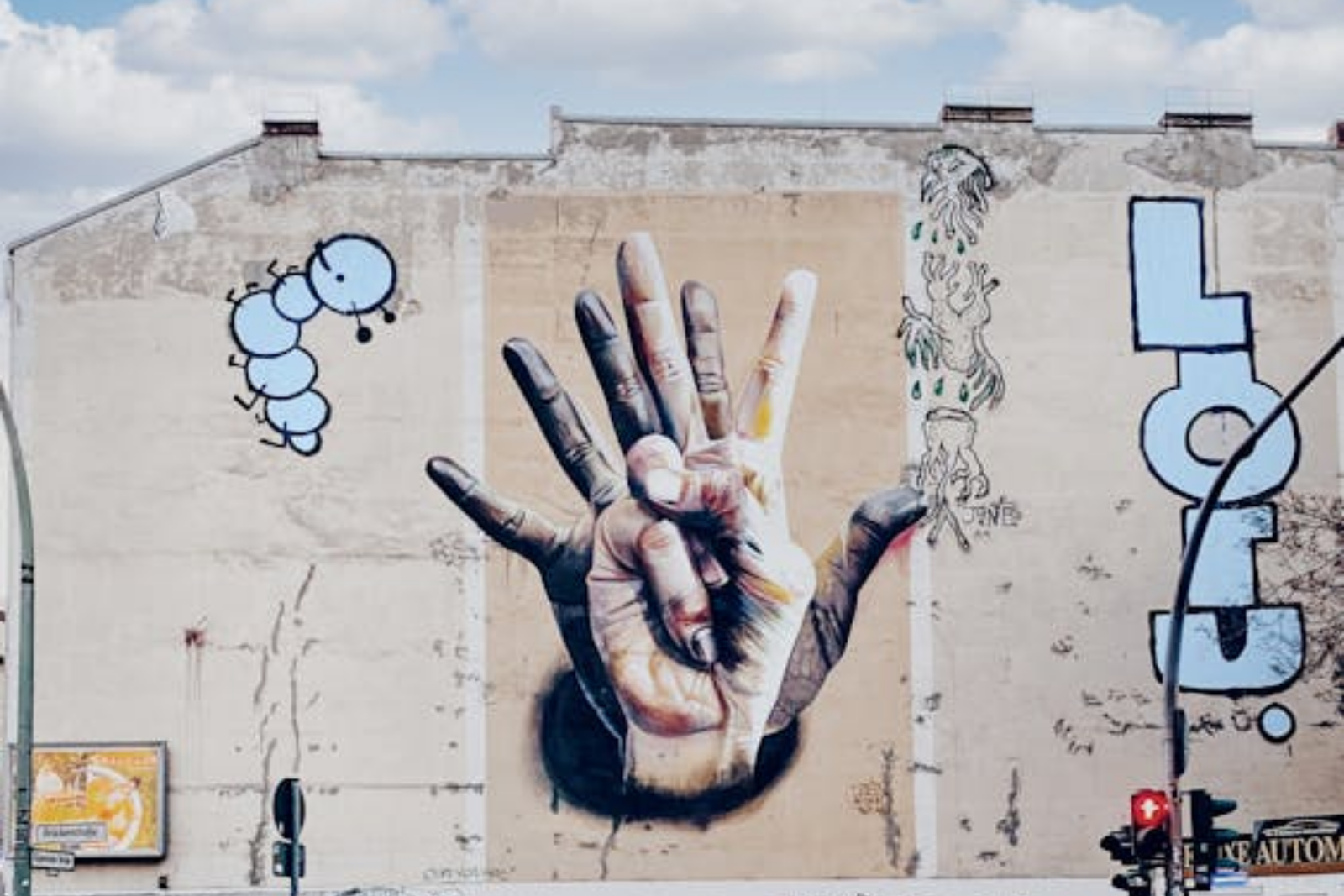
Image: Political street art addressing gentrification in Kreuzberg
Community-Driven Art Projects and Neighborhood Identity
Beyond individual artists’ work, many street art initiatives in Berlin are community-driven, aiming to:
- Revitalize neglected urban spaces
- Foster neighborhood identity and pride
- Create inclusive cultural spaces
- Preserve local history and stories
- Resist commercial development and gentrification
These projects demonstrate how street art functions not just as visual expression but as a tool for community building and urban transformation.
Practical Tips for Street Art Explorers
Best Times to Visit Berlin’s Street Art Hotspots
To optimize your street art exploration experience:
- Seasons: Spring and summer offer the most comfortable conditions for extended walking tours, though Berlin’s street art can be enjoyed year-round.
- Lighting: Morning and late afternoon provide the best natural light for photography.
- Crowds: Visit popular spots like the East Side Gallery early in the day to avoid crowds.
- Festivals: Check for street art festivals like Berlin Mural Fest (usually in May) that bring new works and live painting events.
Photography Tips for Capturing Urban Art
To document your street art discoveries effectively:
- Capture both wide shots showing the context and close-ups highlighting details
- Consider the lighting and time of day for optimal conditions
- Include people in some shots to provide scale and human interaction
- Respect artists by crediting them when sharing photos online
- Bring a portable charger as extensive photo-taking can drain your battery
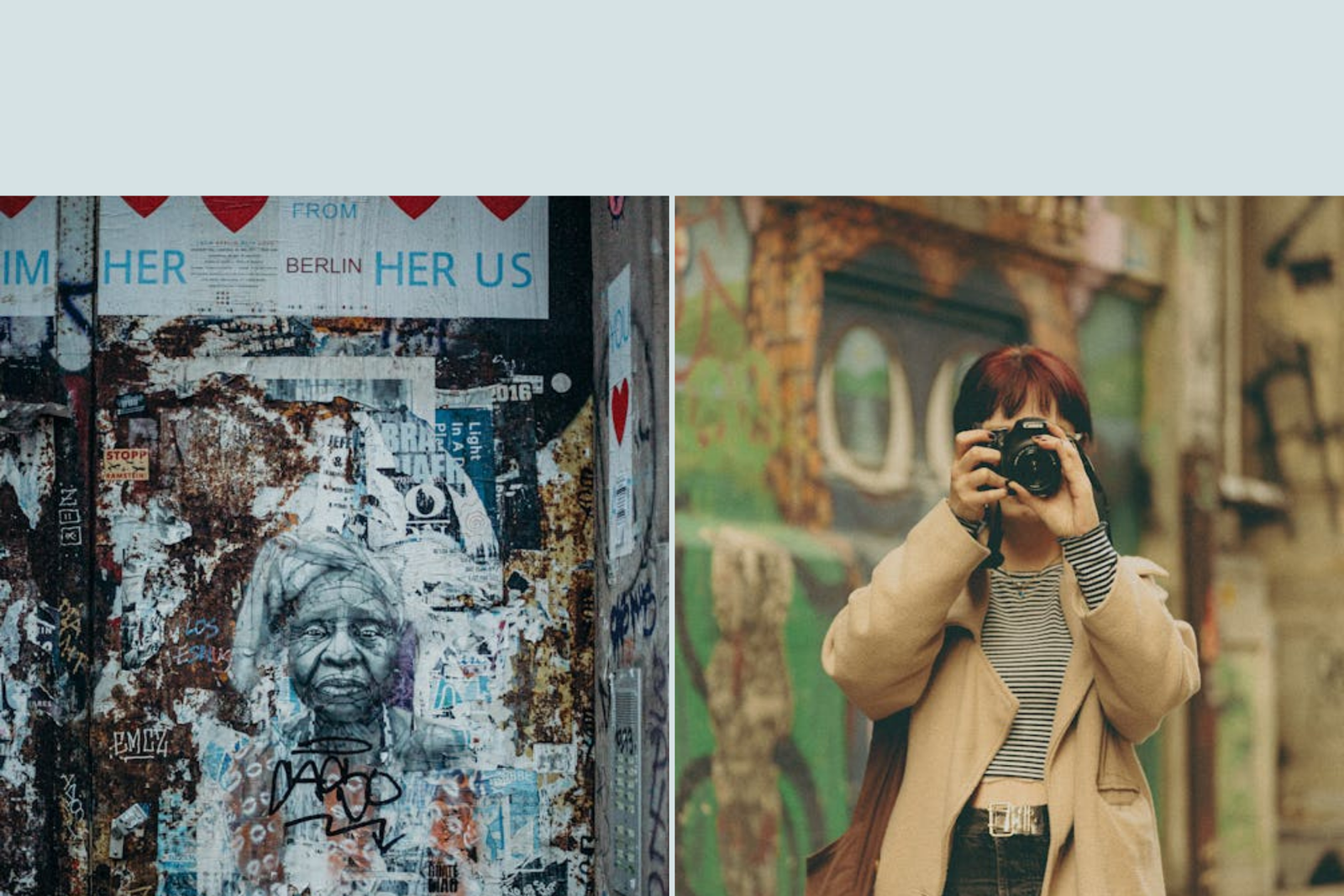
Image: Street art mural in Berlin
Street Art Etiquette for Responsible Tourism
When exploring the street art scenes in Berlin, practice responsible tourism by:
- Not touching or defacing existing artwork
- Respecting private property boundaries
- Supporting local businesses in street art neighborhoods
- Learning about artists and the context of their work
- Contributing to the preservation of significant pieces
Craving more urban creativity? Don’t miss things to do in Cape Town—it’s got its own raw artistic edge.”
Conclusion: Embracing Berlin’s Ever-Evolving Canvas
The street art scenes in Berlin offer travelers a unique window into the city’s soul—its history, politics, communities, and creative spirit. Unlike traditional tourist attractions, this open-air gallery is constantly evolving, ensuring that each visit provides new discoveries and perspectives.
From the historical significance of the East Side Gallery to the raw energy of Kreuzberg’s political murals and the hidden gems of Friedrichshain’s industrial spaces, Berlin’s urban art landscape rewards curious explorers willing to venture beyond the obvious.
Before your trip, ensure you have Gohub’s international eSIM activated to stay connected throughout your street art adventure. With reliable connectivity, you can navigate to hidden murals, research artists on the go, and share your discoveries with fellow travelers and friends back home.
📶 From Kreuzberg to the East Side Gallery, stay connected in Germany with Gohub’s prepaid eSIM — no roaming, no SIM cards, just smooth travel + instant access to maps, apps, and snaps.
As you plan your Berlin itinerary, consider dedicating at least one full day to exploring the city’s street art neighborhoods. The memories and photographs you’ll collect will provide a much more authentic and personal connection to Berlin than any traditional sightseeing tour could offer.
If you crave cultural depth, try homestays in Peru for a whole different kind of connection.








